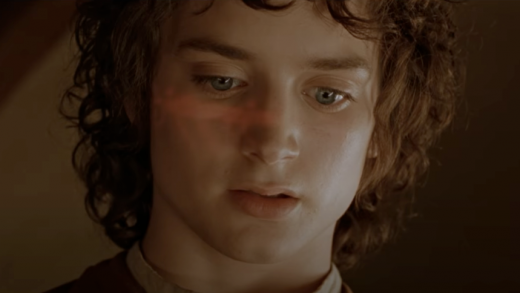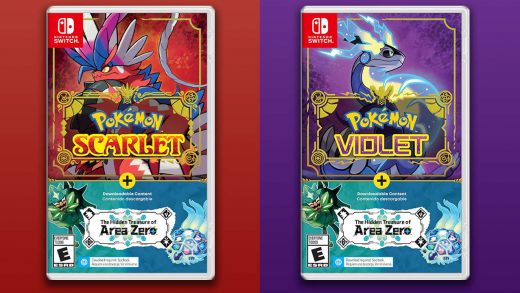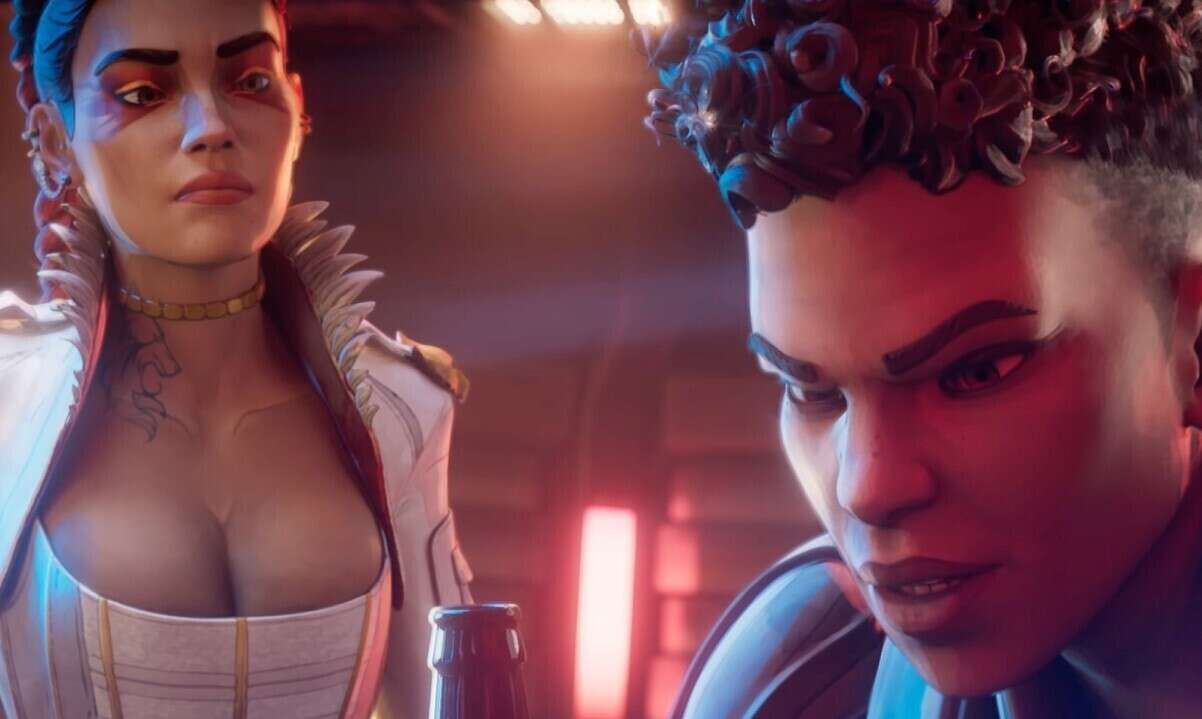
Respawn Entertainment’s free-to-play battle royale, Apex Legends, has always stood out from the crowd. Compared to other hero shooters and battle royales, Apex Legends’ fluid movement mechanics and powerful hero abilities make for a game which appeals to a large audience. But what truly makes Apex Legends stand out in an ever-growing sea of battle royale games is the level of care the narrative team puts into writing and creating the game’s characters. While plenty of games have characters with interesting backstories, very few live-service shooters feature this level of detailed lore, with individual stories that curate believable and organic characters.
Every legend is unique–each of them has highly detailed backstories, motives, desires, and pet peeves. Respawn further develops its characters by introducing relationships between the legends themselves. Some of these relationships are romantic, while others are platonic, but the ever-evolving state of each character’s interpersonal relationships gives the legends an added layer of depth, with in-game voice lines that change from season to season based on plot developments from previous seasons.
From day one, Respawn has made it quite clear that it values diversity and inclusivity, and seeks to foster a similarly diverse, inclusive community among its playerbase. The game launched with an openly gay character (Gibraltar) and a nonbinary character (Bloodhound). As the game evolved, so did the roster, with later seasons introducing LGBTQ+ characters Loba, Fuse, Valkyrie, and Seer.
Other LGBTQ+ legends were lurking in plain sight. Despite being in the game from the very beginning, Bangalore was not officially confirmed as lesbian until Season 13. But the revelation didn’t come out of nowhere–players had spent months watching Bangalore and Loba’s initially antagonistic relationship slowly blossom into romance, coming to a head in Season 9 when Loba’s near-death experience scared Bangalore enough that she refused to take their relationship further–or even admit that they had one.
Instead of just telling players that Bangalore is gay, Apex’s developers put together a story that blended multiple aspects of Bangalore’s personality into a plot development that didn’t seem forced. Bangalore’s trust issues, PTSD, and generally guarded demeanor all came together in a manner that made her coming out story fit seamlessly into the game’s current storyline. By the time her sexual orientation was officially confirmed, few (if any) players were surprised, because everyone had gotten to know Bangalore, similar to the way many people sense that a close friend may be LGBTQ+ long before the person has come out officially.
Respawn doesn’t just dabble in surface-level representation–the studio is committed to creating realistic characters who aren’t tokenized or reduced to their sexuality, gender, or race. Loba is a perfect example–when she arrived on the scene in Season 5, there was no announcement regarding her sexuality (or that of Bangalore, who would enter a “will they, won’t they” back-and-forth with the enchanting thief in the following seasons). Instead, players were given little hints about Loba. One of her intro quips is “I’m a maneater and a ladykiller–I enjoy variety,” and Loba often refers to all the legends (save Revenant) as “beautiful” when talking to them. Her sexuality informs how she talks but doesn’t define who she is.
And, brilliantly, Respawn used a character who was so confident in her sexuality to tell a compelling coming-out story for Bangalore. Bangalore’s unique dialogue with Loba betrayed the former IMC soldier’s interest in the bewitching thief, evolving to reveal that Bangalore’s stoic heart had feelings for a woman. When Loba and Bangalore’s romance became somewhat official in Season 9, it didn’t feel forced or artificial, mainly due to Respawn’s excellent character development over the course of four seasons, which primed players to expect a potential romance between the two legends. Season 9’s real surprise wasn’t the revelation that Bangalore and Loba had feelings for each other, it was that the arrival of Valkyrie posed a threat to that relationship.
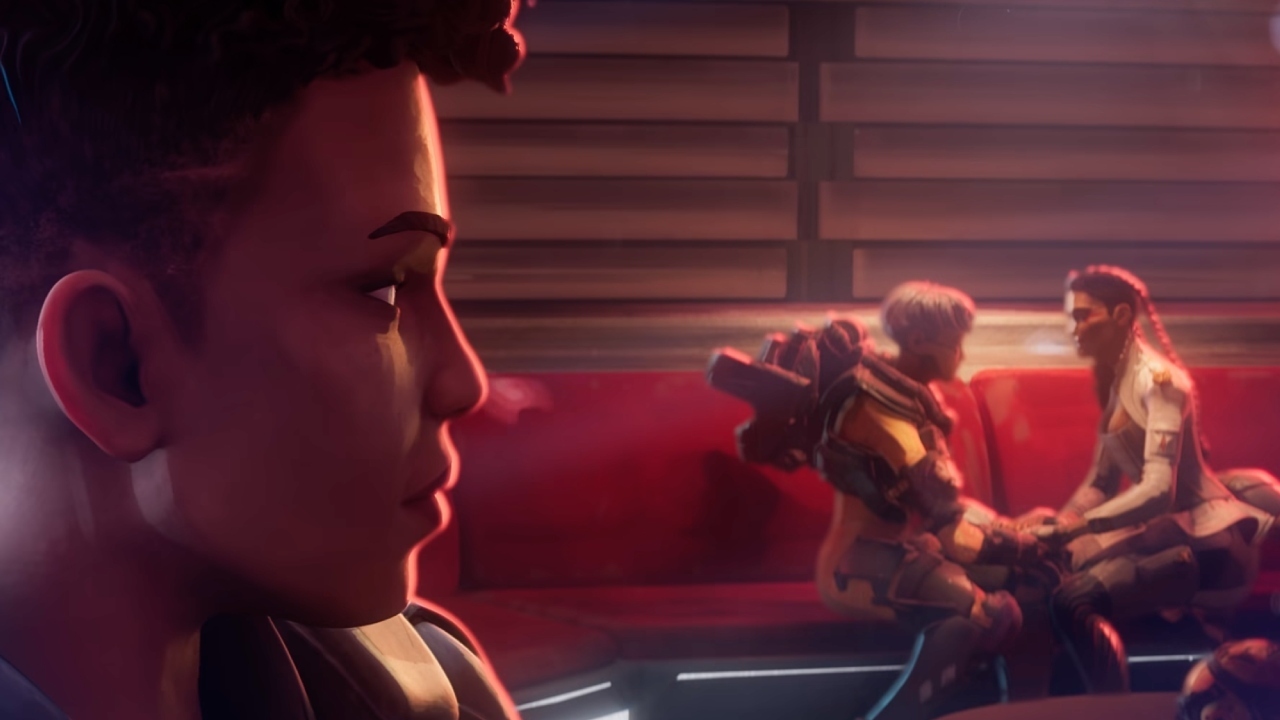
So how does Respawn manage to juggle a story with, as of Season 13, 21 main characters, all of whom have unique, intricately detailed pasts, personalities, and preferences? We decided to go to the source, emailing Apex Legends lead writer Ashley Reed and narrative director Manny Hagopian. Those questions and their responses are transcribed below.
Do you ever regret introducing canon relationships into Apex Legends, queer or otherwise, between the playable characters as opposed to just having the legends date NPCs?
Hagopian: I don’t regret much in our writing. If we make a choice, we follow through with it until we are able to make another choice in a different direction. The best thing about Apex is that we are able to try new things and change them if needed in a natural and organic way. Life itself is full of wrong choices, so it’s only natural that our characters experience the same. We’re just as imperfect as our characters, that’s what helps make them real and relatable. That said, I think the power of keeping our characters interacting with each other as opposed to NPCs outside of the games allows us to keep the conversations active in the moment and further define the relationships among our Legends.
Reed: Where’s the fun in that? I was admittedly cautious about introducing relationships in the early days, when people (including us) were still trying to understand what Apex was and where it lived in our universe. But after the Broken Ghost quest, that all changed–we dipped a toe into more dramatic interpersonal storytelling, and we had a lot of fun writing those squabbles and will-they-won’t-they scenarios right along with the action. The audience liked it, too, so we knew we were onto something. Now it’s another tool in our toolbox–we want to tell all kinds of stories about these characters, from their lowest moments to their most dramatic victories, and romance has a place in that. We still want to leave room for fans to have fun and imagine their own scenarios, and to introduce important characters who aren’t playable (it would be weird if the Legends only ever interacted with each other–go outside, make some friends who don’t shoot at you!). But this is another facet of our characters that we can explore.
Are relationships between legends, queer or otherwise, planned out from the beginning, or do some of them happen organically while the story is still being developed?
Reed: A bit of both–and that’s the story of writing in general, especially for an evolving narrative like ours. We’ve had a lot of plans that have come to fruition mostly like we envisioned, and plenty of others that were left by the side of the road in favor of something else. Character relationships are the same way–there are some you think are perfect at first that fall apart as time goes on, and others that you didn’t even consider flower before your eyes. Ultimately, we have to be flexible–if something isn’t working the way you planned, or something else is taking off in a way you didn’t expect, don’t be rigid. Watching a storyline naturally unfurl because it fits so perfectly into what you’ve already done is the best feeling.
Hagopian: Ashley has been more in the trenches with this and that’s because as the story and game grows, the characters grow with each new Legend. When we first shipped Apex, we did not plan ahead of time any romantic relationships or even had plans for such things, but as we developed the characters and discovered the connections they had with each other, those relationships naturally emerged. It’s important to note that we don’t have a box to check that reads: “Relationship Status” or “Which Legend to Ship With.” We don’t force these developments, we discover these developments. Our writers’ room often leads to these discoveries and if we feel passionate about them, we explore them further.
Some characters are revealed to be queer the day of their addition (like Gibraltar and Seer), while others go a long time before the Apex Legends team officially confirms it (most notably, Bangalore). How do you determine when is the right time to disclose that information to the playerbase, especially given fans’ desire to not be queerbaited?
Reed: Like you said, it varies per character–we knew Gibraltar was gay early on, and we didn’t want to spring it on people later and make it feel like an afterthought. For Bangalore, that developed over time–it was only when we saw how well she played off Loba that we went “Oh…” Some characters are very open with that information–Loba and Valkyrie casually mention it in some of their dialogue–versus a character like Bloodhound who doesn’t feel the need to bring it up much. Just like with real people, some are more forward than others. Our goal, above all else, is for them to feel genuine.
Hagopian: We treat our characters like real people in our world. Some are open about their sexuality and some are not. As I’ve mentioned before, we don’t have boxes to check in terms of what we cover for a character, but instead approach our character development with what the writer is gravitated towards through collaboration with other departments.
How has Apex Legends’ diverse cast of characters had an impact on the team’s creative process when it comes to making more legends? Apex Legends has a far more diverse roster in comparison to the characters seen in both Titanfall games.
Reed: Titanfall was more about a war and how the people caught up in it reacted to those circumstances–it isn’t the kind of story where you delve into the characters’ personalities and get to know them over months or years. Apex is based entirely around the characters, and the Games are a jumping off point for their adventures. It made sense to create a diverse group of people with different experiences, histories, struggles and ambitions–otherwise you’d get bored of playing them, and we’d get bored of making them! We always try to think about what each new Legend can bring to the table that’s unique to them, while still feeling like a full and complex human being.
Hagopian: These are two very different games that live in the same universe. The approaches are very different with different goals. Apex Legends is a character based game, so the strong development of unique characters and their point of views was a key pillar to creating the game. Whereas Titanfall focused more of the greater stakes of the world and the war that took control of these people’s lives. The approach to Titanfall was to create compelling characters for one off moments like our bosses Kane or Slone, but not characters you’d build relationships with (except BT) and develop over the course of the game, which doesn’t leave much room for elements of their personal lives.
However, thanks to Apex, we’ve been able to further delve into some of those stories like Ash and Viper and hopefully more in the future! That said, I can’t say that we haven’t been growing as a company and an industry over the last 10 years and we’ve certainly hit some bumps along the way. To answer the question about how our diverse cast of characters has had an impact on the team’s creative process, well, by focusing on characters more than we ever have, the process has grown to give ample time for our team to get each element to the best it can be. For one-liner NPCs, you could create them in a week or even a day, but for our Legends, we take the time and care they deserve to accurately define a personality that lives in our world—it’s very fun!
Does the team look to any other hero shooters for inspiration when it comes to figuring out the dos and don’ts of designing queer characters?
Reed: I’d go broader here–we’re always looking around at other stories to see how they handle different kinds of content and how it makes us feel as audience members. If we see a revenge story and feel inspired by it, we ask ourselves why–what about that stood out to me, and how can I replicate that feeling in my own work? The same goes for the opposite–“Oh no, I hated that. How do I avoid doing anything like that?” We look at portrayals of queer characters the same way, though not in isolation–input from queer folks is critical. Who better to say if a portrayal is positive or negative than the person being portrayed?
Hagopian: I can’t imagine a world where we don’t care about the exciting and wonderful work our colleagues at other studios are doing. Of course if something is received poorly, we’ll learn from that mistake, but that’s us as a whole in the industry. I’d hope that other studios look at us as well for the lessons we’ve learned. I have a lot of friends who are writers for other games, not necessarily shooters, but we all support each other and learn from each other. This is also something outside of games, I have great friends in the worlds of TV/Film and we are always trying to help each other get better and work together to support up and coming new voices.
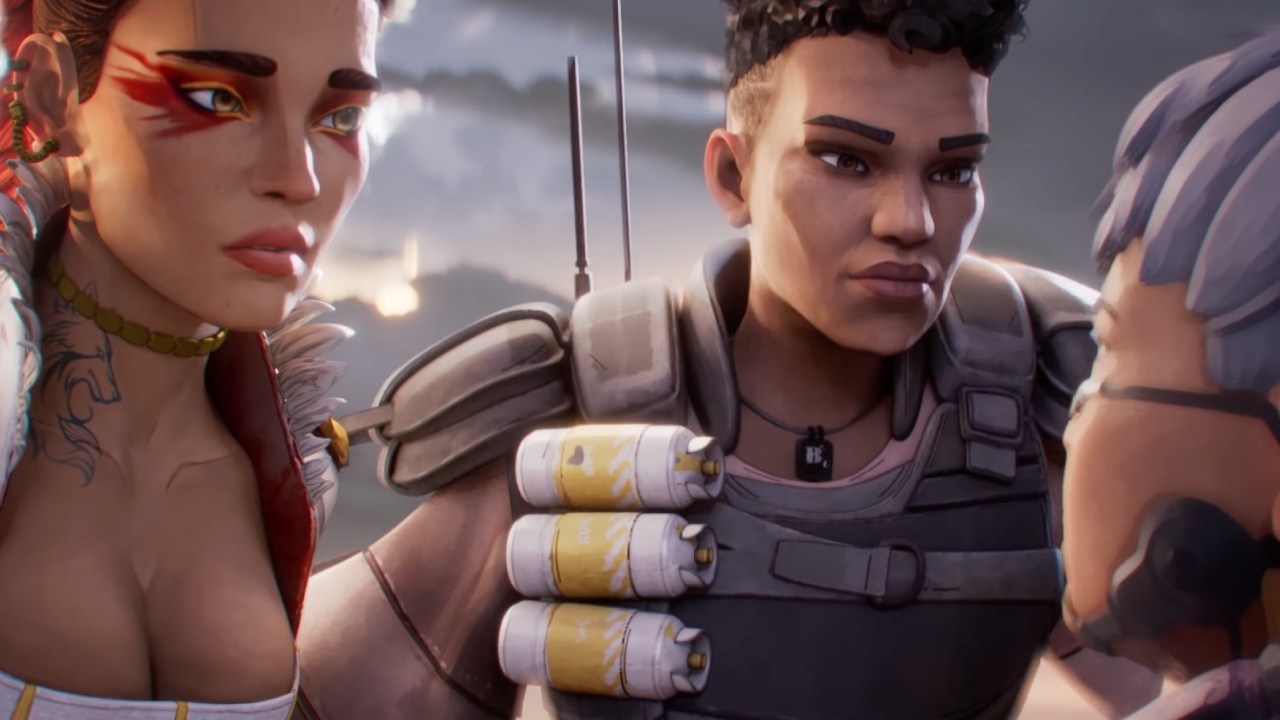
How do you think Apex Legends’ diverse cast of characters has had an impact on the culture of players who participate in online gaming, if at all?
Reed: I hope so! The dream is that seeing a diverse cast like this–different people with vastly different experiences–opens players up to a wider world. Maybe they don’t know what it means to be non-binary, then they meet Bloodhound. Or maybe they’re non-binary themselves and seeing Bloodhound makes them feel welcome. We hope that our cast can make more people feel at home in our game, or more aware of all the different kinds of people who could be joining them on a server.
Hagopian: I’ve received many messages from fans in our amazing community who have told me beautiful stories about how important our cast and characters are to them and how they finally feel represented or even grown to understand themselves a bit more because of our characters’ own stories. There’s unfortunately toxicity that shows up, but my focus is on the positive. I see and hear those voices and stories and that is the true community that we’re fortunately a part of. I, myself, have learned so much from them and continue to learn.
How does gender play a role when it comes to designing the character model, mannerisms, and clothing of non-biological characters like Revenant and Ash, if at all?
Reed: That depends on context. Ash and Revenant are both simulacra–a human whose consciousness has been moved into a mechanical body. Their designs reflect the gender they were when they were human (because that’s the gender they still are) and how they express that. That’s not necessary for a character like Pathfinder, who could have easily been either or neither and still had the same model. It really depends on the personality of the character and what suits them best.
Hagopian: Ashley’s answer fits. They are formerly human characters, whereas Pathfinder, BT, and DOC are not. This is also more of an art direction question since the purpose for a lot of how a character looks has to do with their silhouette for gameplay purposes.
How does the team tackle unfamiliar gender identities or sexualities? What’s y’all’s process for working through that?
Reed: Talking with real people who identify with those genders or sexualities is a must. In the early stages, that can be someone we know, someone we work with, or even ourselves–someone who can speak from experience we’re trying to share. We have an open collaborative process, and respect experts in their fields both internally and externally. When we feel we still need guidance, we work with consultants to really dig in on those portrayals to make sure we’re getting them right.
I won’t go into it at length here, but our writer Sam Gill recently gave an interview [at IGN] on the kind of work we do with authenticity readers–for Mad Maggie in his case, but it’s indicative of our process for Legends’ past, present, and future.
Hagopian: Same as Ashley, but I’ll add that it’s important to have more than a singular voice as well as involvement early in development.
Are there plans to include additional gender identities in Apex Legends one day? I’d love to see a transgender character added to the Apex Games.
Reed: I will say that we don’t go into Legend development with a quota of any kind–we want to discover who these characters are organically, so we don’t go in with the idea we have to check X amount of boxes. We never quite know what the future holds for that reason, but we know we want to keep exploring and creating characters with all kinds of different backgrounds and experiences.
Apex Legends is free-to-play on console and PC.
The products discussed here were independently chosen by our editors.
GameSpot may get a share of the revenue if you buy anything featured on our site.

